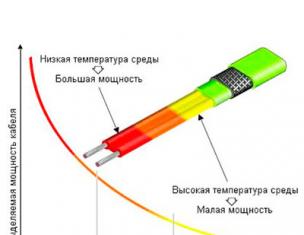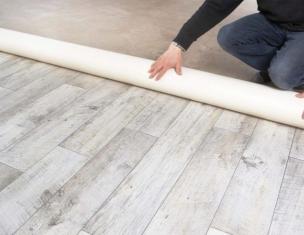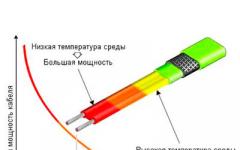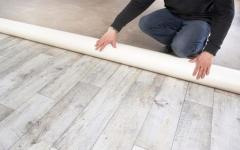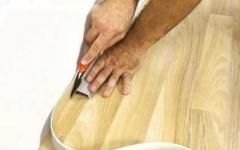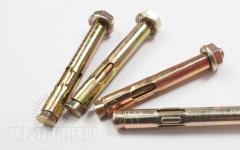education and its territory
2.1. The site allocated for the location of the building of an additional education organization must be located outside the sanitary protection zones of enterprises, structures and other objects and at distances that ensure standard levels of noise and air pollution for residential areas.
Bulgaria has been a member of WHO since its inception and is actively involved in programs to improve health care in Bulgaria. Each year the holiday slogan is different and focuses on a priority theme in which WHO is involved. The Regional Health Inspectorate in Targovisht is organizing a children's drawing competition. Targovishte took part in his own works “My Health”.
A branch of the Moscow Art Theater Popovo with three new chambers will be opened in Targovishte. It will be located in the former specialized surgical hospital on Pirin Street. After the official signing of the agreement with the NHIF, Monday - June 19, a branch of three new departments will open - surgery, orthopedics and traumatology and the department of anesthesiology and intensive AIRT therapy.
2.2. Through the territory of the organization additional education The main engineering communications of water supply, sewerage, heat and energy supply should not pass through.
2.3. It is recommended to fence the territory of the organization of additional education with a fence and/or a strip of green space.
To prevent shading of windows and reduce natural light in the premises, trees are planted no closer than 15 m from the building, bushes - no closer than 5 m.
According to initial information, the departments will serve 44 clinical pathways and 7 outpatient procedures and 24 physicians will work there. New activities are accredited for the second level of competency. In 4 of the places checked - 3 restaurants and entertainment and 1 medical facility, smoking is allowed. For non-compliance with the ban on smoking in enclosed public places, two acts were drawn up legal entities and 4 individuals. 8 orders of legal entities were submitted for compliance with the requirements of Art. 56 of the Health Care Law.
With proposals to the Ministry of Health and the ended meeting of the National Assembly of the Governor of Targovishte Mitko Staikova with leaders in the field of health care in the region. He added that the state should finance municipal and district hospitals and have clear rules for distributing reserves to the fund.
2.4. A waste collection area is equipped on the territory at a distance of at least 15 m from the building. Containers with lids are installed on a hard surface area. The dimensions of the site must exceed the base area of the containers. It is allowed to use other special closed structures for collecting waste, including placing them on container sites in residential buildings adjacent to the territory of the organization of additional education.
“The lack of personnel for whom hospitals operate in sanitary minimum, is also a serious problem,” said the manager of the Targoviste Hospital, Dr. Ivan Firefly. According to him, “medical institutions are drowning financially and collectively.” The percentage of hospital uninsured persons is 25.4% of Targovishte residents and the negative impact on them financial condition also high, it was clear at the meeting.
The majority of them are in Omurtag - 33.6%, followed by Antonov - 30.9%, Opaka - 26.9%, Popovo - 23.4%, and Targovishte - 22.2%. The meeting participants today expressed satisfaction that the first governor is initiating such discussions, which have the opportunity to share their problems and make their proposals.
2.5. The territory of the organization of additional education must have external electric lighting. The level of artificial illumination on the territory during the stay of children should be at least 10 lux at ground level in the dark.
2.6. For children with disabilities, measures are provided to create an accessible (barrier-free) environment on the territory of buildings of additional education organizations under construction and reconstruction.
“They will be presented to the Parliamentary Health Committee,” said Regional Governor Mitko Staykov. Similar seminars have already been held in other regional cities. The purpose of preventive examinations is to timely identify possible chronic poisonings and take the necessary measures. A worker who has a health problem that is related to his/her work with pesticides is advised to consult with his/her personal physician. According to current Ministry of Health regulations, pesticide workers must be under medical supervision and undergo training.
2.7. When installing open running tracks and sports grounds (volleyball, basketball, handball and other sports games) on the territory of an additional education organization, measures are taken to prevent flooding by rainwater.
2.8. The surface of the playgrounds and sports area should be grass, with compacted soil, dust-free, or made of materials that do not have a harmful effect on humans.
When working with pesticides, protective equipment is required. Pesticides should not be used by sick people, people under 18 years of age or over 60 years of age, pregnant or breastfeeding women, and women who think they will have children in the future. The two most common reasons for cholinesterase testing are: exposure to phosphorus pesticides and congenital pseudogolinesterase deficiency. Is advance preparation required? No preparation is required for cholinesterase testing. How to conduct the research?
Cholinesterase is measured in a blood sample taken from a vein. A slight twitching may occur during manipulation. DR MIMI VLADISLAVOVA KUBATEVA. Approves the name and number of departments and sectors in the structure of the RIS Directives in coordination with the Minister of Health.
III. Requirements for the organization's building
additional education
3.1. It is recommended that newly constructed facilities of additional education organizations be located in a separate building.
Buildings of additional education organizations can be attached to residential buildings, buildings for administrative and public purposes (except for administrative buildings of industrial enterprises), as well as built-in residential buildings and built-in and attached to residential buildings, buildings for administrative public purposes (except for administrative buildings of industrial enterprises).
Exercises authority to carry out disciplinary liability of RIS personnel. Monitors the certification of civil servants and persons working in labor relations. Designates an employee to perform the functions of an information security officer within the meaning of the Classified Information Protection Act.
Issues decisions on punishment in cases provided for by law. Issues orders to impose compulsory administrative measures in cases provided for by law. Considers appeals against imposed compulsory administrative measures in cases provided for by law.
Placing additional education organizations in premises built into residential buildings, in built-in and attached premises (or attached) is allowed if there is a separate entrance.
Classrooms for preschool children (up to 7 years old) and primary school children (up to 11 years old) are located no higher than the third floor of the building.
Conducts checks of proposals and warnings from citizens. Carries out activities to organize and provide medical assistance in the event of disasters, accidents and catastrophes in the territory of the relevant area. Organize training on defense mobilization and develop wartime plans for organizing medical care for the population in the region.
Provides methodological guidance on the activities of units in the municipal administration performing functions in the field of healthcare. Coordinate and monitor activities for the implementation of national and regional health programs in the relevant area.
3.2. Entrances to buildings of additional education organizations are equipped with vestibules or air-thermal curtains.
3.3. To create conditions for the stay of children with disabilities in the buildings of additional education organizations under construction and reconstruction, measures are taken to create an accessible (barrier-free) environment.
Organize, direct and supervise medical examinations in the relevant area. Makes decisions on the implementation of public procurement procedures related to the activities of the Republic of Ingushetia, in accordance with the terms and procedures of the Public Procurement Law.
Schedules and manages meetings of the Board of Directors and the RIS Expert Council. Creates commissioned councils, committees and working groups of commissioned experts. Department of MEDICAL RESEARCH. Performs microbiological diagnostics by volume in accordance with the Clinical Microbiology standard.
3.4. The set of premises of the building of the organization of additional education is determined by the focus of the additional general education programs being implemented.
The recommended composition and area of premises in which classes of various types (technical, artistic, natural science, physical education and sports) are organized, implementing additional general education programs, are adopted in accordance with Appendix No. 1 (Tables 1, 2 and 3).
Premises for theoretical classes of various types are provided at a rate of at least 2.0 m2 per student.
3.5. It is recommended to place premises in the building of an additional education organization for classes taking into account their functional purpose:
Workshops for sculpture and ceramics - on the first floors of the building with access to the site;
Wardrobes, rooms for sports activities, technical creativity with large-sized or machine equipment, halls for holding entertainment events - on the first floors of the building;
Chemical-technical, astronomical (with observatories) laboratories, painting workshops are on the top floors of the building.
If there is a medical office, it is located on the ground floor of the building.
3.6. The area and equipment of premises for classes using personal computers must comply with the hygienic requirements for personal electronic computers and the organization of work.
3.7. When designing buildings for additional education organizations, the height of the premises and the ventilation system must ensure hygienically sound air exchange rates. Air exchange in the main premises of additional education organizations is accepted in accordance with Appendix No. 2.
3.8. The construction and finishing materials used must be harmless to human health. Materials for interior decoration must be resistant to wet cleaning and treatment with disinfectants. It is allowed to use wallpaper for interior decoration that allows for wet cleaning and disinfection.
Ceilings, walls and floors of all rooms must be smooth, without violating the integrity and without signs of fungus damage.
3.9. At sports and choreographic halls, changing rooms are equipped separately for boys and girls. Each student in the hall is provided with a locker or clothes hanger.
In newly constructed and reconstructed buildings of additional education organizations at sports and dance halls, showers are equipped at the rate of at least 1 shower per 10 people.
3.10. On each floor of the building there are separate toilets for boys and girls, equipped with cubicles. The number of sanitary fixtures is taken at the rate of no less than: 1 toilet for 20 girls, 1 washbasin for 30 girls; 1 toilet, 1 urinal and 1 washbasin for 30 boys.
There is a separate toilet for staff.
In previously constructed buildings, the number of toilets and sanitary fixtures is allowed in accordance with the design.
Toilets are provided with pedal buckets, toilet paper, soap, electric dryer (or paper towels, napkins) for hands.
Soap, toilet paper and towels must be available at all times.
3.11. In newly constructed buildings, on each floor there are allocated rooms for storing and processing cleaning equipment, preparing disinfection solutions, equipped with a drain pan with cold and hot water supply to it.
In previously constructed buildings, a separate place (or room) is provided for storing cleaning equipment, which is equipped with a cabinet.
I. General provisions and scope
1.1. These sanitary and epidemiological rules and regulations (hereinafter referred to as sanitary rules) were developed in accordance with the Federal Law "On the Sanitary and Epidemiological Welfare of the Population" dated March 30, 1999, N 52-FZ, Law Russian Federation“On Education” dated January 13, 1996 N 12-FZ (as amended and supplemented, Collection of Legislation of the Russian Federation 2002, N 7, Art. 631), by Decree of the Government of the Russian Federation dated 03/07/1995 N 233 (as amended by 02/22/1997) "On approval of the Model Regulations on Preschool educational institution"(Collected Legislation of the Russian Federation 1995, No. 12, Art. 1053).
2.1. Distances from industrial, municipal, agricultural facilities, transport roads and highways to institutions of additional education are accepted in accordance with the requirements for the planning and development of cities, towns and rural settlements.
III. Requirements for the building and main premises
3.1. Institutions for additional education of children can be located either in a separate building or in a built-in or attached room. Buildings can consist of several blocks connected to each other by insulated passages.
In connection with the entry into force on June 30, 2003 of the Sanitary and Epidemiological Rules and Standards " Hygienic requirements to personal electronic computers and work organization. SanPiN 2.2.2/2.4.1340-03" by Resolution of the Chief State Sanitary Doctor of the Russian Federation dated June 3, 2003 N 119, the said Sanitary Rules and Norms were declared invalid
3.8. When organizing sports activities, the requirements must be met sanitary rules arrangement and maintenance of places for physical education classes.
IV. Requirements for water supply and sewerage
4.1. Buildings of institutions for additional education of children must be equipped with drinking water, fire and hot water supply systems, sewerage and drains.
V. Requirements for equipment and premises for organizing main activities
5.1. When locating institutions of additional education for children in adapted buildings, it is necessary to ensure sufficient space minimum set premises for activities of children's associations, as well as provide equipment, furniture, storage room, wardrobe and bathroom that meet sanitary standards.
VI. Requirements for natural and artificial lighting
6.1. The main premises of additional education institutions must have…



